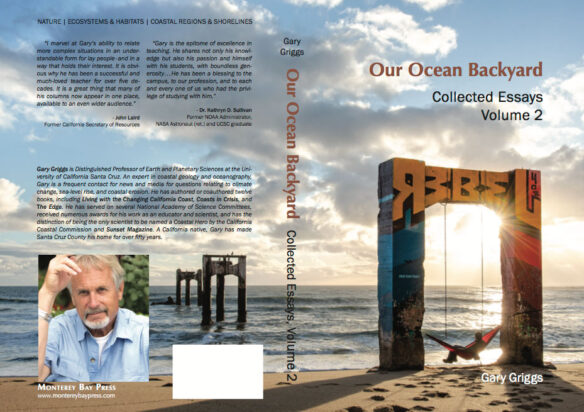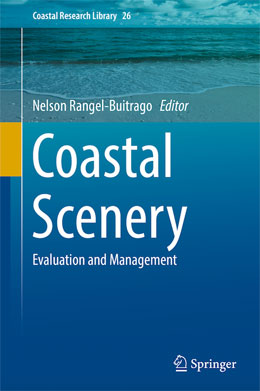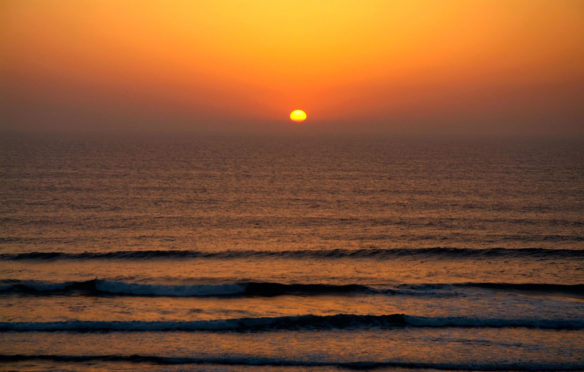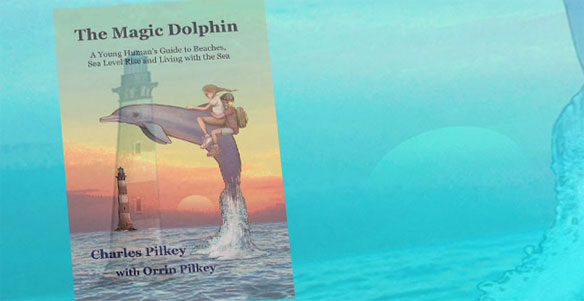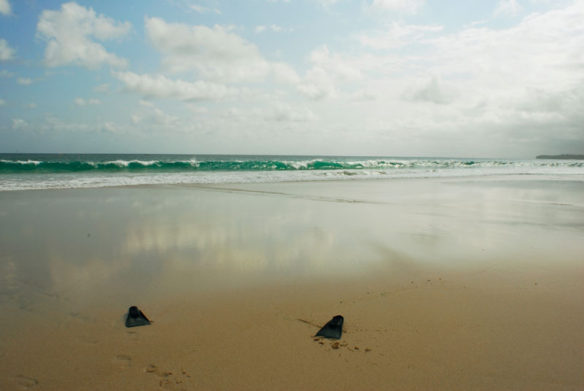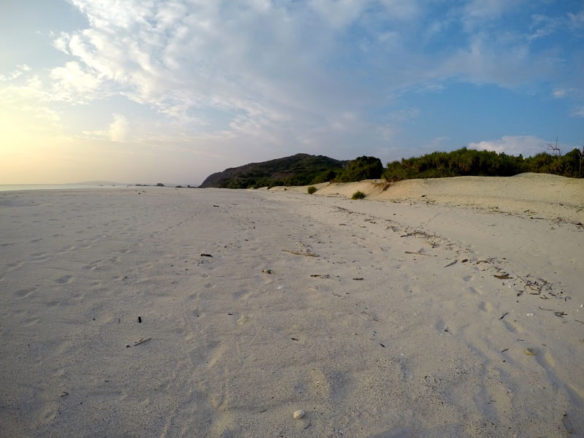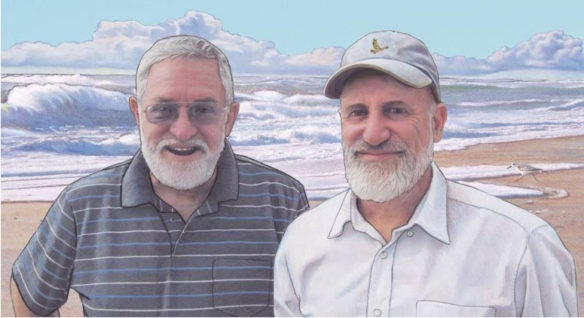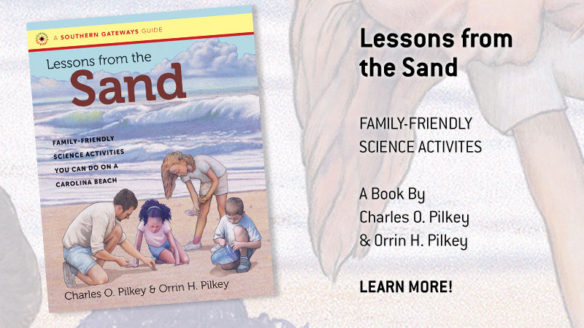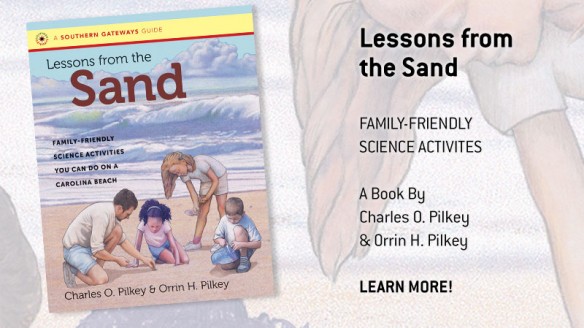San Clemente Dam, Carmel River, California. Photograph by: © 2007 Gary Griggs
By © Gary Griggs, Author of “Our Ocean Backyard- Collected Essays”
In addition to providing most of California’s drinking water, the state’s rivers and streams also provide about 75% of our beach sand. In order to provide water for agriculture, industry and homes, as well as flood control, recreation and hydroelectric power, the state’s rivers were extensively dammed throughout the last century.
There are now more than 500 dams impounding rivers and streams that drain directly into the Pacific along our coastline. Since the first one was built in 1866, an average of 3.5 dams have been built each year ever since. In addition to storing water, the reservoirs behind each of these 500 barriers also trap sand that used to be carried to the shoreline.
Dams now withhold sediment from about 16,000 square miles of the state’s coastal watersheds and have reduced the flow of sand by 25%, or about 3.6 million cubic yards each year. That’s 360,000 dump truck loads annually. The total amount of beach sand now trapped behind all of California’s coastal dams totals about 200 million cubic yards, or a line of dump trucks bumper to bumper stretching completely around the world nearly four times.

These reductions vary regionally: in northern California, there are still a number of relatively undisturbed rivers, the Smith and Eel rivers, for example, and sand supply has only been reduced by 5%; in central California, 31% of the sand flow has been eliminated by dams; and in southern California, hundreds of water supply lakes, reservoirs, flood control projects, and debris basins have reduced sand supply to the coast by about 50%.
The long-term sustainability of California’s beaches depends primarily on the periodic delivery of sand and gravel from coastal rivers and streams. Sand supply to the state’s beaches wasn’t a con- cern, however, when most of California’s streams were dammed.
The benefits of more water, flood control, recreation, and hydroelec- tric power in some cases, were compelling to farmers, fishermen, and politicians through much of the 20th century. Over the past 25 or so years, however, the side effects of dams, including loss of salmon migration and spawning grounds, as well as beach sand impoundment, have become more and more evident.
The construction of new dams has come to a halt in California and in other states as well, and is actually now going into reverse. A number of dams that formed barriers to fish migration and that were completely full of sediment have been taken down across the country and others are being studied for removal.
In California, San Clemente Dam on the Carmel River, Gibralter Dam on the Santa Ynez River, Matilija Dam on the Ventura River, and Rindge Dam on Malibu Creek are now completely full of sediment and no longer serve any purpose. Additionally, because they were built many decades ago, their seismic safety is now a concern. Combined these 4 dams have trapped 2.8 million dump truck loads of sand that can end up on the downstream beaches. Google “dam removal” to see some of the dam removal projects that have already been accomplished.
We can do the same in California and get the sand from these dysfunctional reservoirs onto the beaches where it belongs.
Learn More: “Our Ocean Backyard – Collected Essays”; a Book by Gary Griggs
For the three billion people on Earth who live in coastal regions, the ocean is figuratively, if not literally, “our backyard.” The oceans enrich our lives in countless ways, but our interactions with them have not always been positive. Gary Griggs, a coastal geologist and oceanographer, is known for making science understandable, enjoyable, and accessible to non-scientists, was asked to write a bi-weekly column, “Our Ocean Backyard” for the Santa Cruz Sentinel…
Sediment Trapped Behind Dams Makes Them ‘Hot Spots’ for Greenhouse Gas Emissions
The large reservoirs of water behind the world’s 50,000 large dams are a known source of methane. Methane has a warming effect 25 times more powerful than carbon dioxide. That knowledge led to questions about hydroelectric power’s image as a green and nonpolluting energy source…
DamNation; a Documentary That’s Testing the Waters of Corporate Social Responsibility; From Felt Soul Media
DamNation is a feature documentary, shown this week at SXSW in Austin, Tx. DamNation’s majestic cinematography and unexpected discoveries move through rivers and landscapes altered by dams, but also through a metamorphosis in values, from conquest of the natural world to knowing ourselves as part of nature…
Elwha, The Grand Experiment (11-12-2012)
Tracking Sediments’ Fate In Largest-Ever Dam Removal
Scientists tracking the aftermath of the largest dam removal in U.S. history say the dismantling of a dam in northwestern Washington state has unleashed about 34 million cubic yards of sediment and debris that built up for more than a century…
Let’s Talk About Sand: “Sand Wars” Film Director Denis Delestrac, At TEDxBarcelona




